Chris_150G
Reefing newb
This guys tests are interesting. Especially how he found that a glass top reduces PAR.
-Chris
___________________________________________________________________
Photosynthetically Active Radiation (PAR) measurement
This quantum sensor is waterproof and measures only 33x20mm. The sensor generates 0.2mV per umol/m2/sec. It is supplied with 3m of cable. It can be connected to data acquisition systems or simply connected to a multimeter capable of measuring mV. The measured voltage is then converted to the PAR/PPF range simply by multiplying the value by 5. This is a cost effective solution for your PAR monitoring and measurement.
Measuring PAR levels in an aquarium
To find a good performing MH lamp we've used an Apogee Quantum meter to measure PAR (photosynthetically active radiation). PAR levels will vary depending on the type of MH lamp and the age of the lamp.
It is difficult to tell exactly when MH lamps need replacing but a PAR meter can clearly show a decline in light intensity. It allows aquarists to keep lighting levels constant by simply adjusting the hight of the fixtures housing the lamps as this will increase PAR in the aquarium and by replacing lamps at the right time.
A standalone quantum meter can be used for monthly checks. Alternatively a low-cost quantum sensor can be connected to a data acquisition system or an aquarium controller to continually measure and record lighting levels.
If you are interested in checking your aquarium lighting levels using quantum meters please let me know as we have these meters in stock. There is also a demo unit available if you'd like to do a spot check or familiarise with these meters.
The aquarium is set up with flourescent marine tubes. The depth of the aquarium is aproximately 50cm.
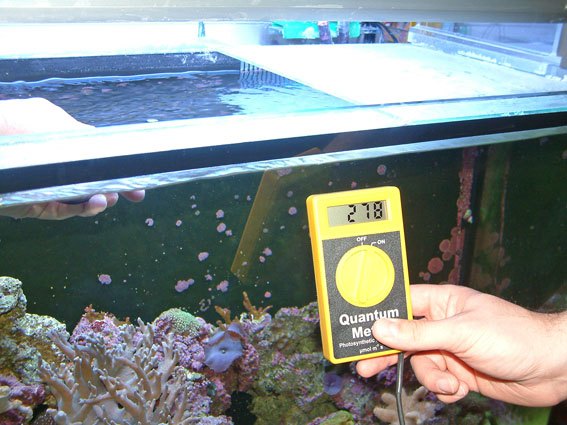
1) Reading taken just under the neon tube, glass over the aquarium was removed
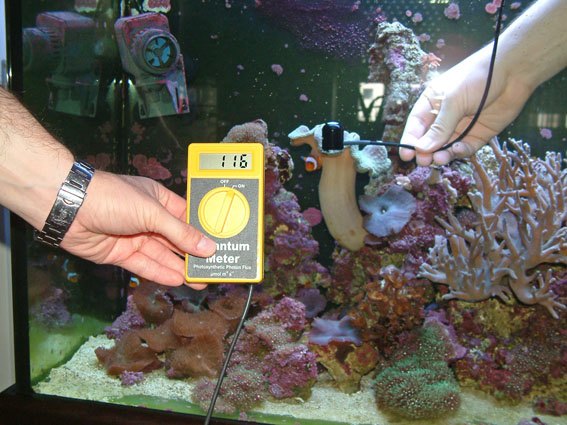
2) Reading taken in the middle of the aquarium, glass over the aquarium was removed
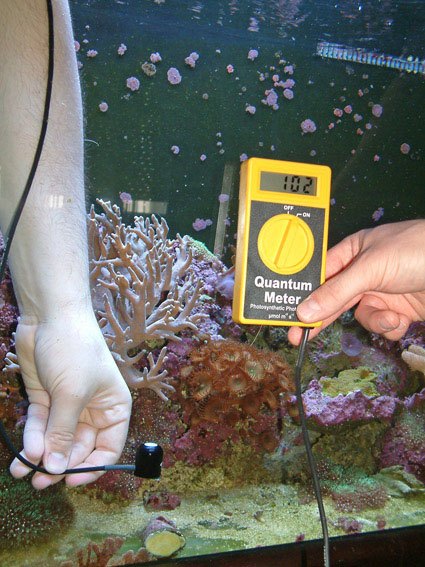
3) Reading taken at the bottom, glass over the aquarium was removed
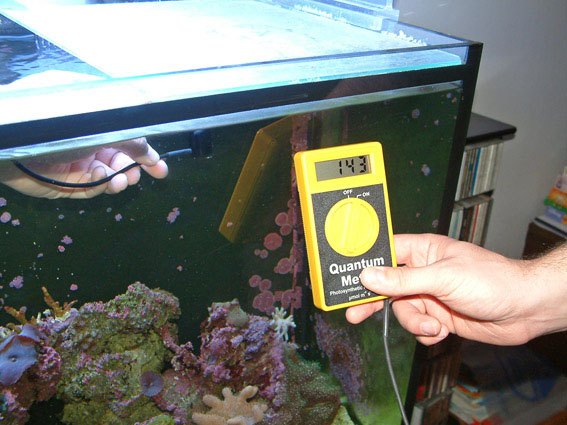
4) Reading taken just under the neon tube with the glass cover
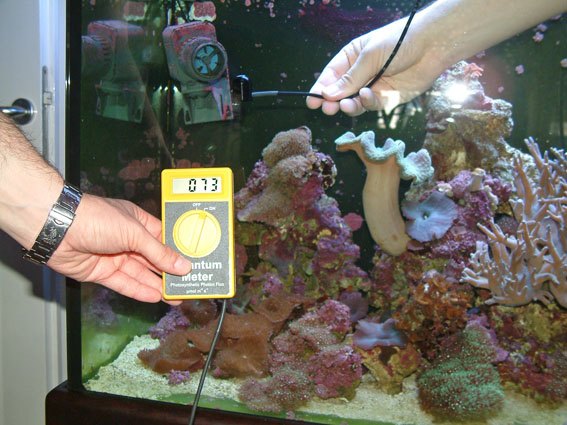
4) Reading taken furhter down from the top with the glass cover in place
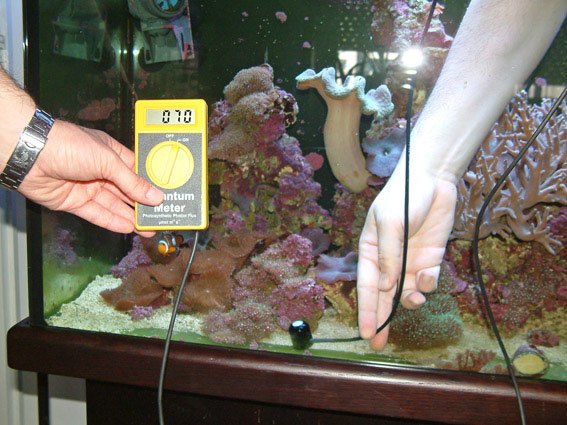
5) Reading taken at the bottom of the aquarium with the glass cover in place
-Chris
___________________________________________________________________
Photosynthetically Active Radiation (PAR) measurement
- In order to keep lighting at constant levels optimal for coral growth it is possible to measure and monitor levels of photosynthetically active radiation (PAR) as well as LUX. Metal halide lamps alongside fluorescent lamps will loose some intensity over a period of time. By measuring PAR it is possible to adjust lighting levels accordingly:
This quantum sensor is waterproof and measures only 33x20mm. The sensor generates 0.2mV per umol/m2/sec. It is supplied with 3m of cable. It can be connected to data acquisition systems or simply connected to a multimeter capable of measuring mV. The measured voltage is then converted to the PAR/PPF range simply by multiplying the value by 5. This is a cost effective solution for your PAR monitoring and measurement.
Measuring PAR levels in an aquarium
To find a good performing MH lamp we've used an Apogee Quantum meter to measure PAR (photosynthetically active radiation). PAR levels will vary depending on the type of MH lamp and the age of the lamp.
It is difficult to tell exactly when MH lamps need replacing but a PAR meter can clearly show a decline in light intensity. It allows aquarists to keep lighting levels constant by simply adjusting the hight of the fixtures housing the lamps as this will increase PAR in the aquarium and by replacing lamps at the right time.
A standalone quantum meter can be used for monthly checks. Alternatively a low-cost quantum sensor can be connected to a data acquisition system or an aquarium controller to continually measure and record lighting levels.
If you are interested in checking your aquarium lighting levels using quantum meters please let me know as we have these meters in stock. There is also a demo unit available if you'd like to do a spot check or familiarise with these meters.
The aquarium is set up with flourescent marine tubes. The depth of the aquarium is aproximately 50cm.

1) Reading taken just under the neon tube, glass over the aquarium was removed

2) Reading taken in the middle of the aquarium, glass over the aquarium was removed

3) Reading taken at the bottom, glass over the aquarium was removed

4) Reading taken just under the neon tube with the glass cover

4) Reading taken furhter down from the top with the glass cover in place

5) Reading taken at the bottom of the aquarium with the glass cover in place
